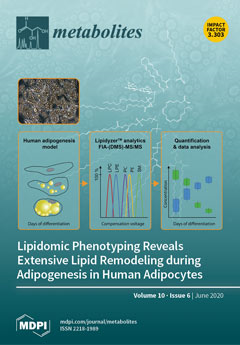Alternaria spp. occur as plant pathogens worldwide under field and storage conditions. They lead to food spoilage and also produce several classes of secondary metabolites that contaminate the food production chain. From a food safety perspective, the major challenge of assessing the risk
[...] Read more.
Alternaria spp. occur as plant pathogens worldwide under field and storage conditions. They lead to food spoilage and also produce several classes of secondary metabolites that contaminate the food production chain. From a food safety perspective, the major challenge of assessing the risk of
Alternaria contamination is the lack of a clear consensus on their species-level taxonomy. Furthermore, there are currently no reliable DNA sequencing methods to allow for differentiation of the toxigenic potential of these fungi. Our objective was to determine which species of
Alternaria exist in Canada, and to describe the compounds they make. To address these issues, we performed metabolomic profiling using liquid chromatography high-resolution mass spectrometry (LC-HRMS) on 128 Canadian strains of
Alternaria to determine their chemotaxonomy. The
Alternaria strains were analyzed using principal component analysis (PCA) and unbiased
k-means clustering to identify metabolites with significant differences (
p < 0.001) between groups. Four populations or ‘chemotypes’ were identified within the strains studied, and several known secondary metabolites of
Alternaria were identified as distinguishing metabolites, including tenuazonic acid, phomapyrones, and altenuene. Though species-level identifications could not be concluded for all groups through metabolomics alone,
A. infectoria was able to be identified as a distinct population.
Full article






